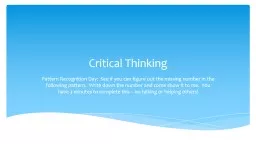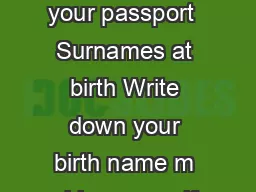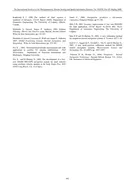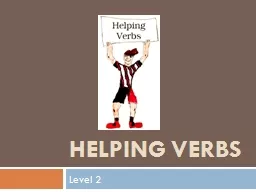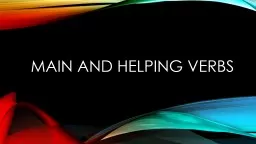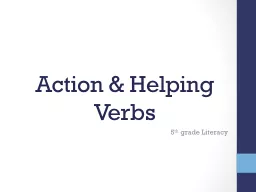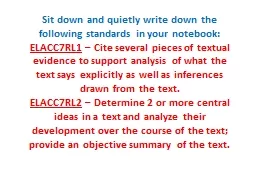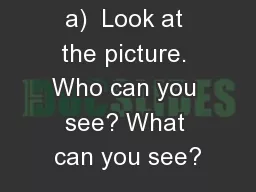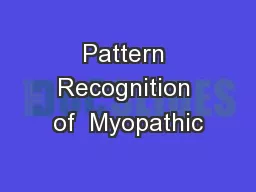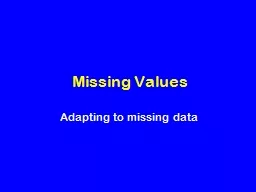PPT-Pattern Recognition Day: See if you can figure out the missing number in the following
Author : tawny-fly | Published Date : 2019-12-14
Pattern Recognition Day See if you can figure out the missing number in the following pattern Write down the number and come show it to me You have 3 minutes to
Presentation Embed Code
Download Presentation
Download Presentation The PPT/PDF document "Pattern Recognition Day: See if you can..." is the property of its rightful owner. Permission is granted to download and print the materials on this website for personal, non-commercial use only, and to display it on your personal computer provided you do not modify the materials and that you retain all copyright notices contained in the materials. By downloading content from our website, you accept the terms of this agreement.
Pattern Recognition Day: See if you can figure out the missing number in the following: Transcript
Download Rules Of Document
"Pattern Recognition Day: See if you can figure out the missing number in the following"The content belongs to its owner. You may download and print it for personal use, without modification, and keep all copyright notices. By downloading, you agree to these terms.
Related Documents

